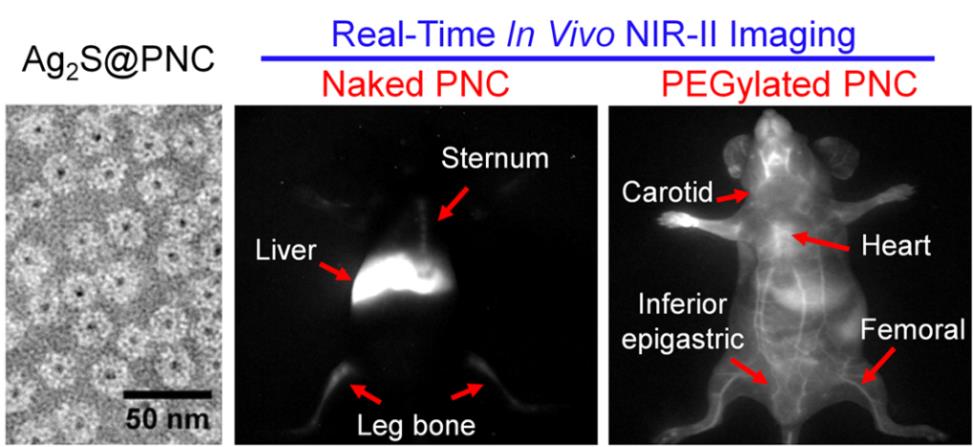Protein nanocages (PNCs),a representative group of protein nanostructures,have attracted tremendous attention due to their unique features such as good biocompatibility and direct genetic fusion with peptide/protein drugs, and they have been recognized as natural biomedical materials for developing vaccines, therapeutic molecules delivery vectors, and in vivo diagnostic devices. The realization of the functions of PNCs in vivo is dependent on their transportation, biodistribution, and the proteinhost interactions. Real-time in vivo tracking of PNCs with high fidelity would offer great convenience to analyzing the in vivo behaviors of PNCs and thus to improving the in vivo targeting and functionality of PNCs, substantially benefiting the translation of PNC-based biomedical techniques to practical applications.
Recently, Prof. WANG Qiangbin’s group from Suzhou Institute of Nano-Tech & Nano-Bionics, CAS(SINANO), demonstrated a general strategy for monitoring the behaviors of PNCs in vivo by encapsulating a Ag2S quantum dot (QD) with fluorescence in the second near-infrared window (NIR-II, 10001700 nm) inside the PNC, using simian virus 40 (SV40) PNC (PNCSV40) as a model.
Benefiting from the high spatiotemporal resolution and deep tissue penetration of NIR-II fluorescence imaging, the dynamic distribution of the PNCSV40 in living mice was tracked in real time with high fidelity, and adopting the PEGylation strategy, surface chemistry-dependent in vivo behaviors of PNCSV40 were clearly revealed (Figure 1).This study represents the first evidence of real time tracking of the intrinsic behaviors of PNCs in vivo without interference in PNC-host interactions by encapsulating nanoprobes inside. The as-described imaging strategy will facilitate the study of interactions between exogenously introduced PNCs and host body and prompt the development of future protein-based drugs, sensors, and high-efficacy targeted delivery systems. This work has been published in ACS Nano (DOI: 10.1021/acsnano.5b05503), and highlighted by Chemical & Engineering News.
This work was supported by Chinese Academy of Sciences “Strategic Priority Research Program”, the Key Research Program of the Chinese Academy of Sciences, the Ministry of Science and Technology of China, National Natural Science Foundation of China, and Natural Science Foundation of Jiangsu Province.

Figure 1. Surface chemistry-dependent in vivo behaviors of PNCs.(Image by WANG Qiangbin's group)
Contact information:Prof.WANG Qiangbin
Suzhou Institute of Nano Tech and Nano Bionics ,Chinese Academy of Science
Suzhou,Jiangsu 215123,China.
E-mail:qbwang2008@sinano.ac.cn
downloadFile
